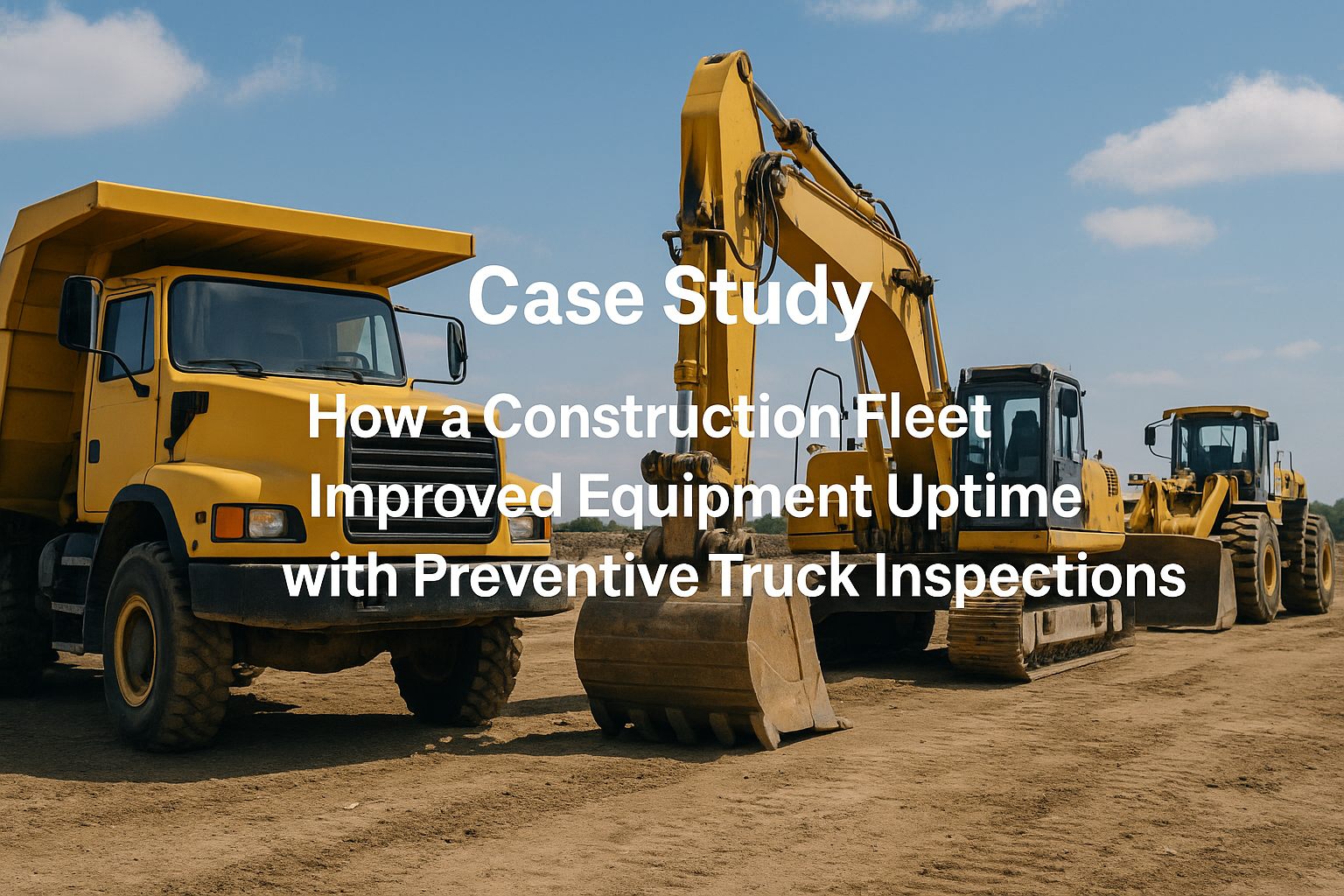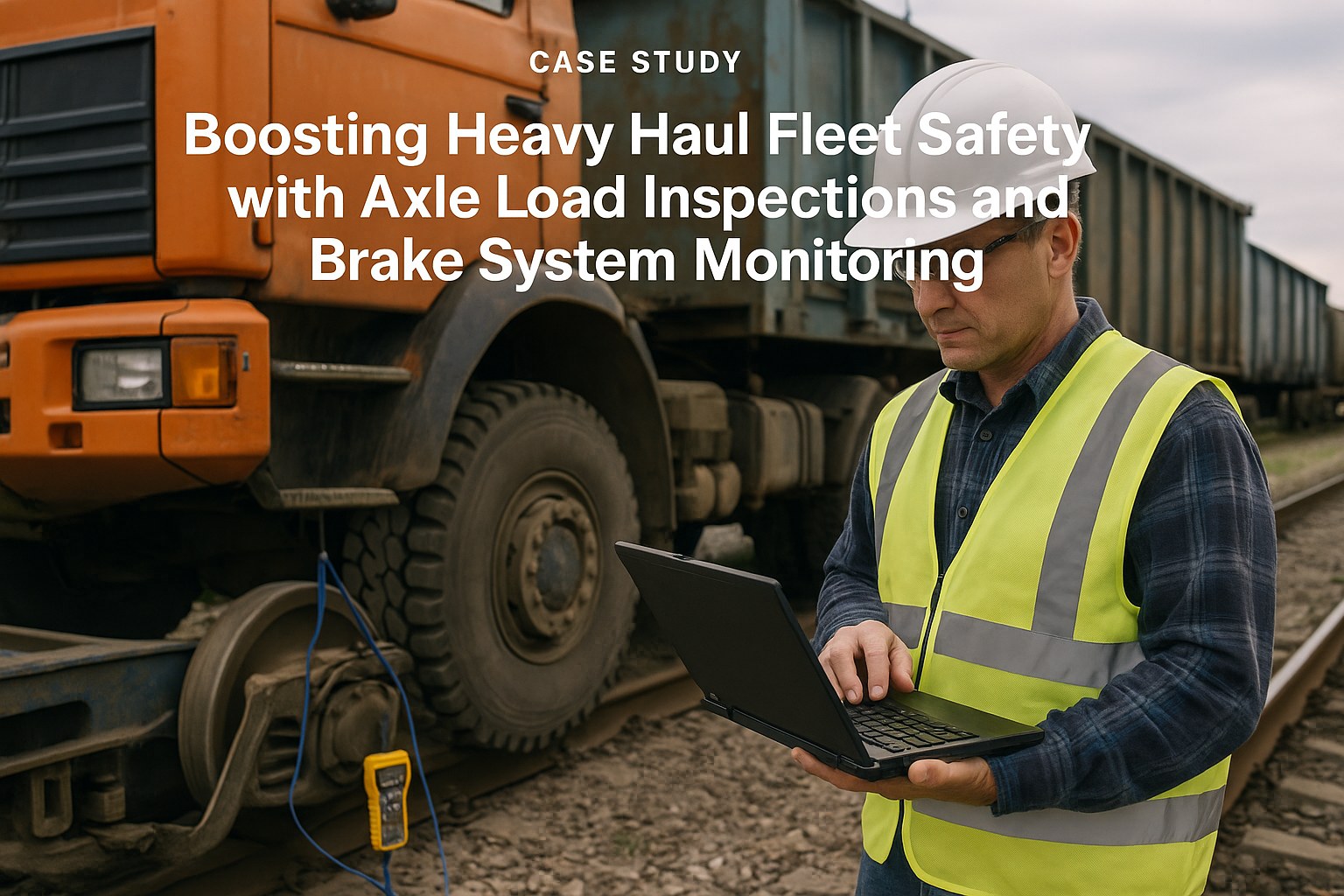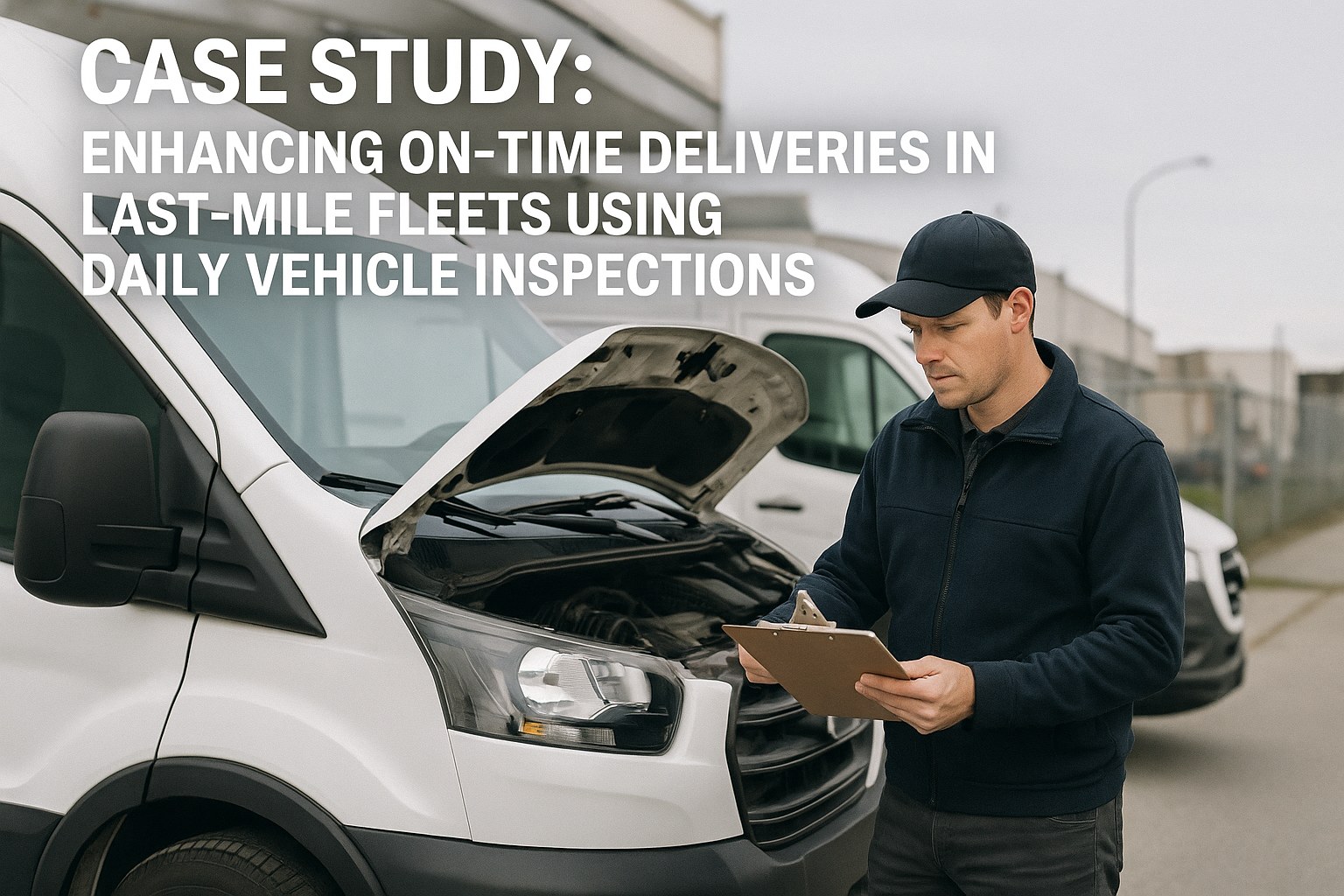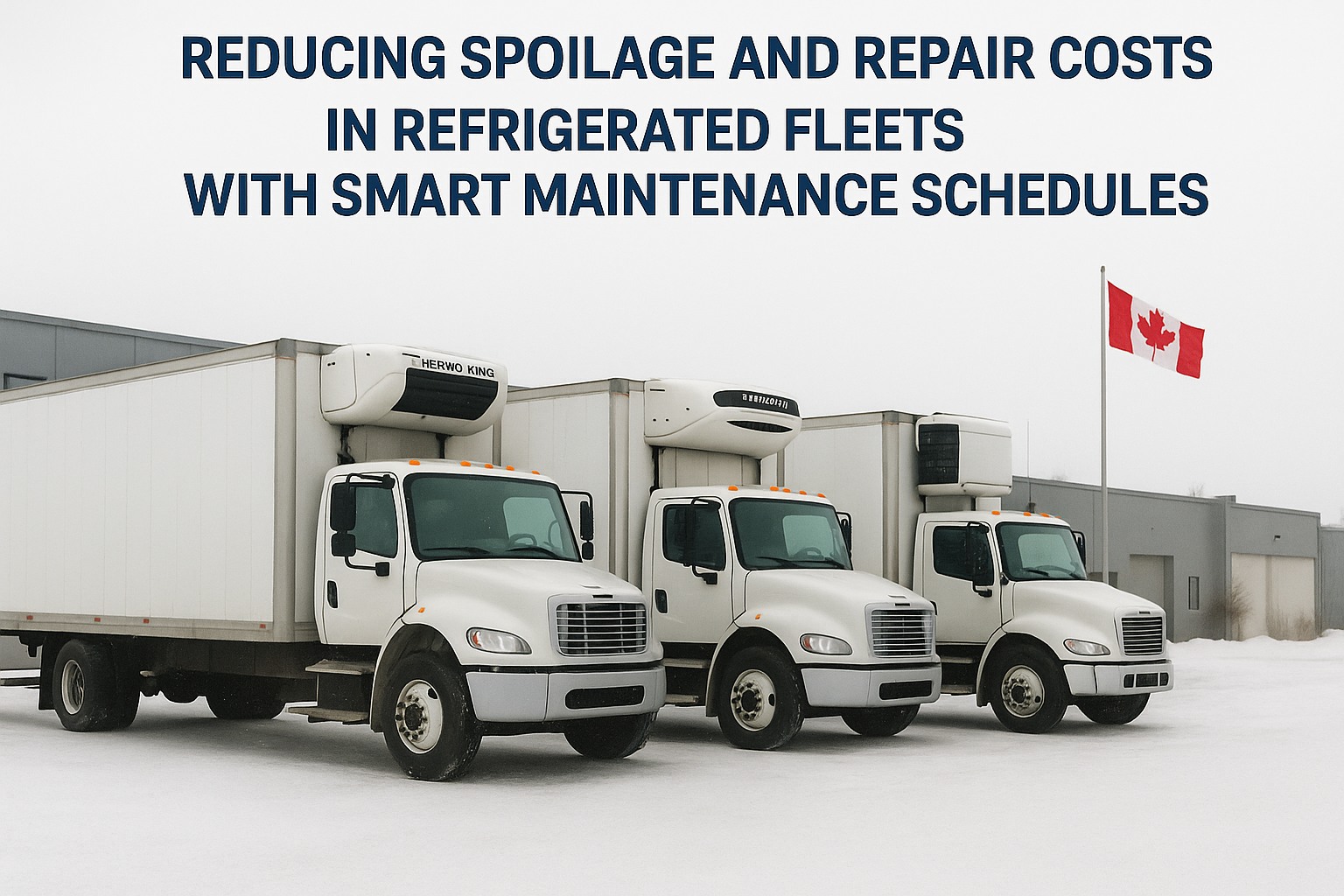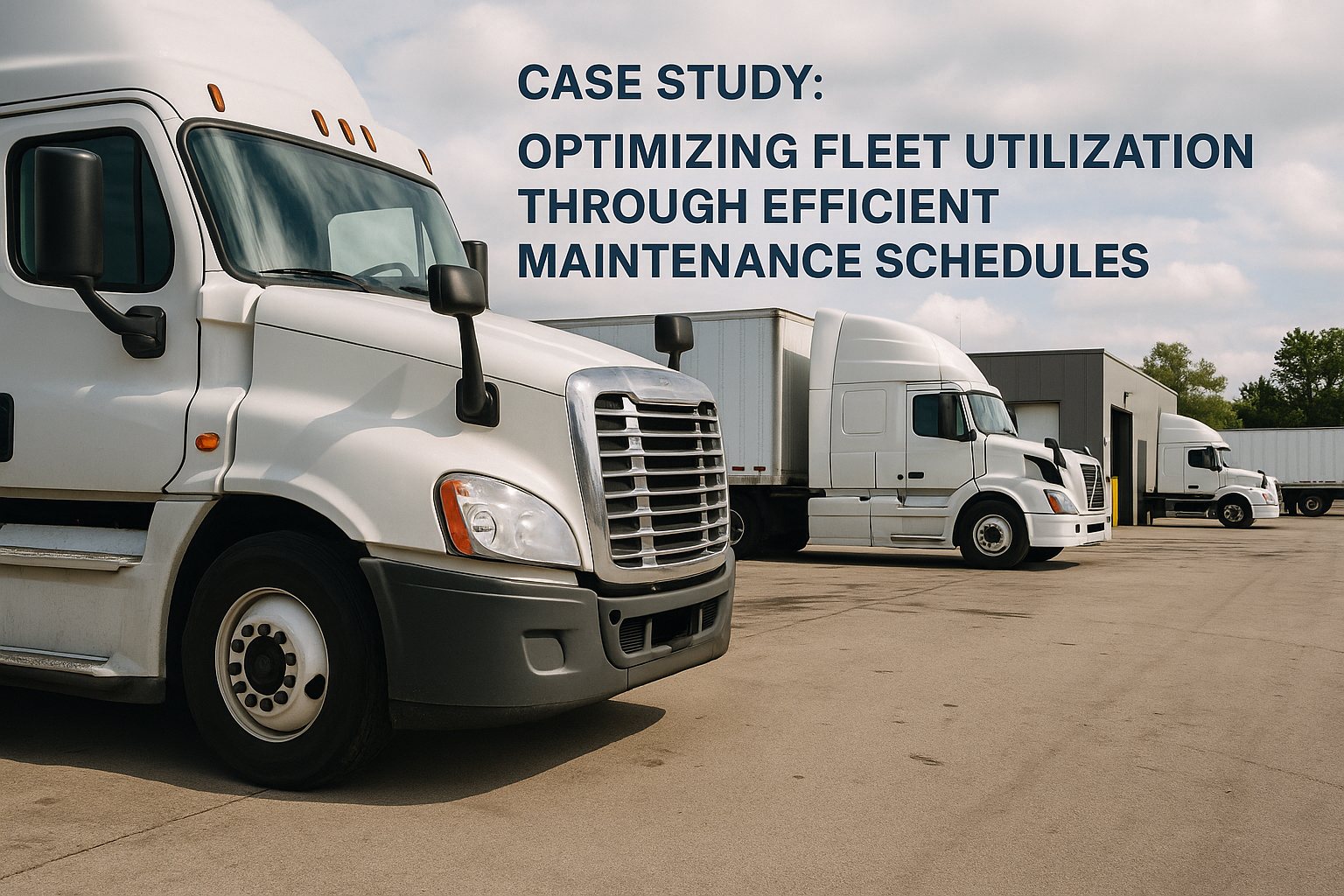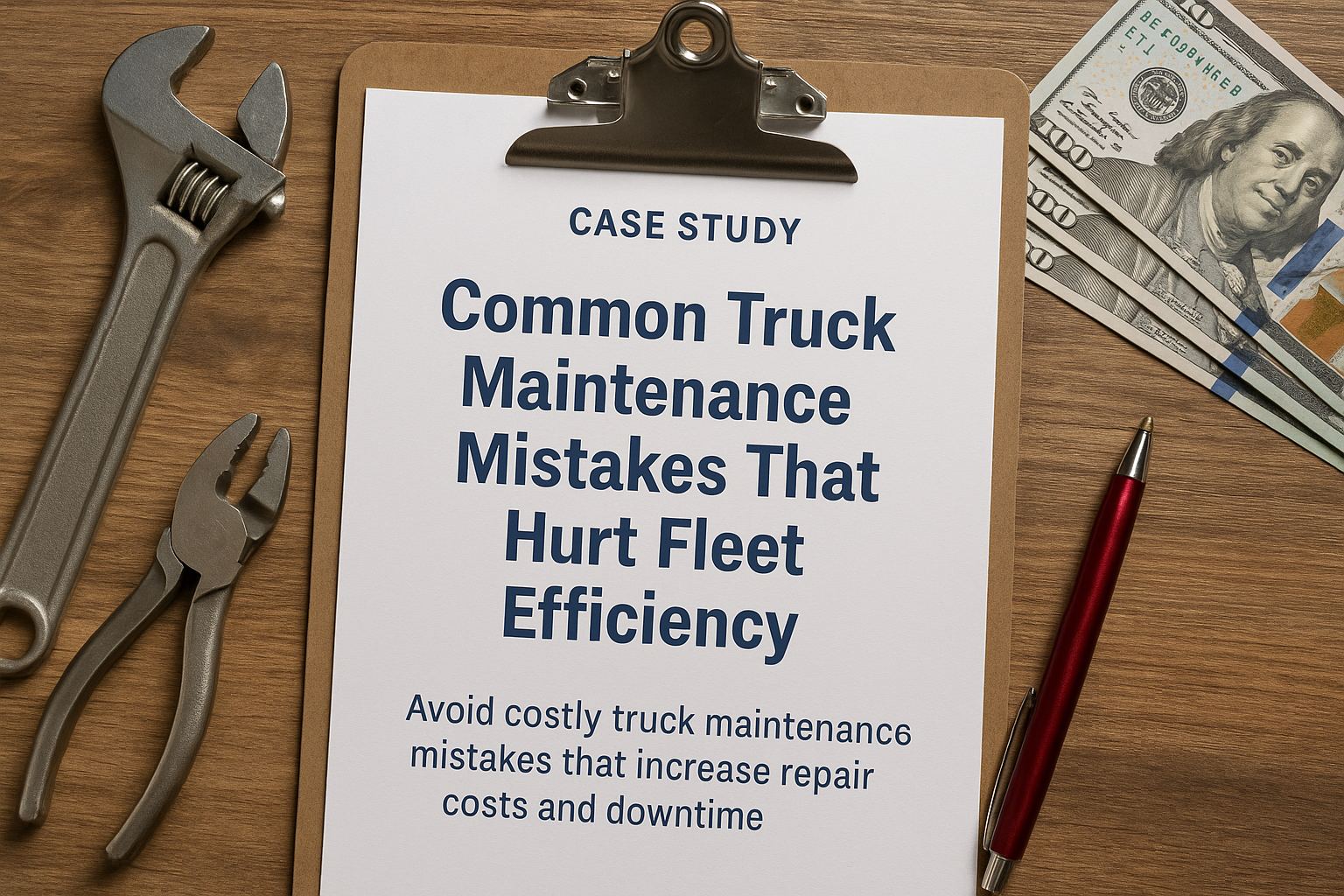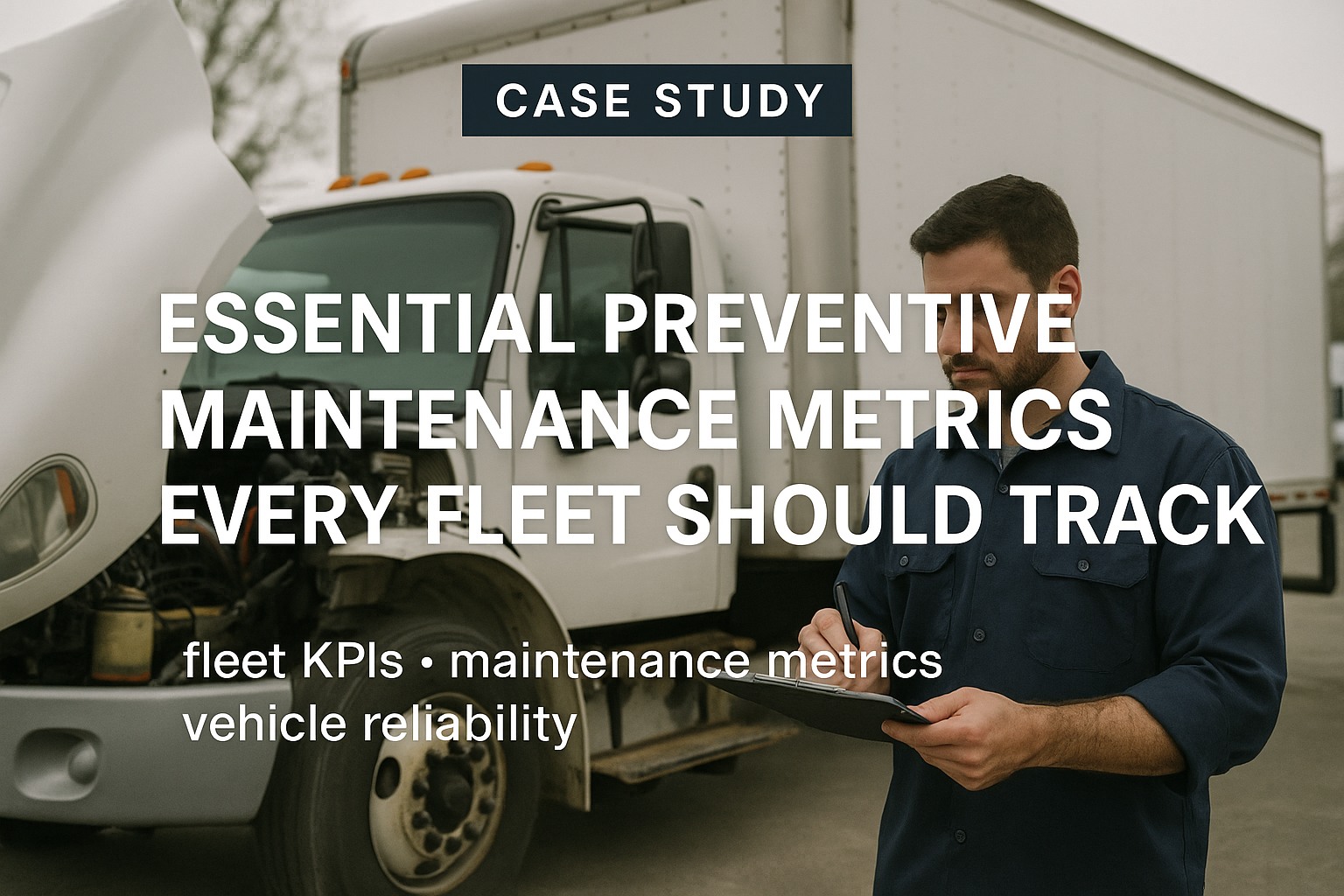In 2024, construction companies across the United States lost an average of $3,500 per day for each piece of idle equipment due to unplanned maintenance. For Titan Construction Group, a mid-sized contractor operating 175 pieces of heavy equipment across 12 states, these numbers represented a critical threat to profitability. This comprehensive case study reveals how implementing a preventive truck inspection program transformed their operations, achieving 25% uptime improvement, 545% ROI, and a remarkable 75% reduction in emergency repairs within just 18 months.
The construction industry faces unique fleet management challenges, where a single excavator breakdown can halt a $10 million project and trigger cascading delays affecting multiple contractors. Modern construction fleet management requires the same precision as hospital equipment maintenance—both demand near-perfect uptime, both operate in challenging environments, and both benefit dramatically from predictive maintenance strategies powered by IoT fleet management and telematics construction equipment.
Consider the stark reality: The average construction company experiences 800 hours of unplanned equipment downtime annually, translating to $280,000 in lost productivity per machine. Yet, companies implementing comprehensive preventive maintenance programs report equipment uptime improvement of 20-30% while reducing total cost of ownership (TCO) by 35%. This case study examines how three construction companies achieved these transformational results through innovative fleet tracking solutions and construction CMMS software.
Understanding Construction Fleet Optimization Challenges
Construction fleet optimization differs significantly from traditional trucking operations. Equipment operates in harsh environments with extreme dust, vibration, and temperature variations that accelerate wear. Additionally, construction equipment often sits idle between projects, creating unique maintenance challenges that require sophisticated asset tracking construction systems to monitor and manage effectively.
Critical Construction Fleet Challenges:
- Equipment utilization rates averaging only 30-40% industry-wide
- Harsh operating conditions accelerating component failure
- Multi-site operations complicating maintenance coordination
- Skilled technician shortage affecting repair quality and speed
- Complex ownership models mixing owned, leased, and rented equipment
- Regulatory compliance including OSHA, EPA, and DOT requirements
The parallels between construction equipment maintenance and healthcare facility management are instructive. Just as hospitals implement CMMS to ensure critical equipment availability, construction companies must maintain their heavy equipment with equal diligence. Both industries face severe consequences from equipment failure, regulatory oversight, and the imperative to maximize asset utilization while controlling costs.
Case Study 1: Titan Construction Group's Digital Transformation
Titan Construction Group, operating across the Midwest with annual revenues of $450 million, faced a maintenance crisis that threatened their competitive position. With 175 pieces of equipment including excavators, bulldozers, cranes, and a fleet of 85 heavy trucks, their reactive maintenance approach was destroying profitability.
The Challenge
Before implementing their preventive maintenance program, Titan Construction faced cascading operational failures that threatened their market position:
- Average equipment downtime of 23% across the fleet
- $4.2 million in lost productivity annually due to breakdowns
- Emergency repair costs 3.5x higher than planned maintenance
- Project delays affecting 35% of contracts, risking client relationships
- No centralized visibility into equipment health or maintenance history
The Solution
Titan implemented a comprehensive preventive maintenance strategy combining IoT fleet management, predictive maintenance construction techniques, and cultural transformation. Their approach integrated cutting-edge technology with proven maintenance methodologies.
Phase 1: Technology Foundation
Titan deployed a cloud-based fleet management software construction platform integrated with telematics construction equipment across their entire fleet. Every piece of equipment received GPS tracking, engine monitoring, and diagnostic capabilities, creating real-time visibility into fleet health and utilization.
Phase 2: Predictive Maintenance Implementation
Using historical failure data combined with manufacturer recommendations, Titan developed equipment-specific maintenance schedules. Their construction CMMS software automatically generated work orders based on hour meters, calendar intervals, and condition monitoring, ensuring no critical maintenance was missed.
Phase 3: Mobile Inspection Program
Field operators received mobile devices with custom inspection apps, enabling detailed daily equipment checks. These digital inspections fed directly into the maintenance system, triggering immediate action when issues were identified. The equipment downtime reduction achieved through early problem detection exceeded all projections.
Results and Preventive Maintenance ROI
Within 18 months of full implementation, Titan Construction achieved remarkable results that transformed their competitive position:
- Operational Excellence: Equipment uptime increased from 77% to 96.25%
- Cost Reduction: Total maintenance costs decreased by 42% through preventive vs. reactive repairs
- Project Performance: On-time project completion improved from 65% to 94%
- Safety Enhancement: Equipment-related safety incidents reduced by 67%
- Financial Impact: 545% ROI achieved through productivity gains and cost savings
Case Study 2: Coastal Infrastructure's Asset Tracking Revolution
Coastal Infrastructure, specializing in highway and bridge construction with 95 pieces of heavy equipment, faced unique challenges managing assets across multiple job sites. Their implementation of advanced asset tracking construction systems delivered unprecedented visibility and control.
The Innovation Approach
Coastal Infrastructure pioneered the use of IoT sensors beyond basic telematics, implementing vibration analysis, hydraulic pressure monitoring, and thermal imaging to predict failures before they occurred. Their fleet tracking solutions created a digital twin of each machine, enabling simulation-based maintenance planning.
Key innovations included predictive component replacement based on actual wear patterns rather than hours, automated parts ordering triggered by condition monitoring thresholds, mobile maintenance teams positioned based on predicted failure locations, and integration with weather data to adjust maintenance schedules for environmental conditions. Their total cost of ownership TCO dropped by 38% while construction equipment efficiency reached industry-leading levels.
Building Your Preventive Maintenance Program
Creating a world-class preventive maintenance program for construction fleets requires systematic implementation combining technology, processes, and culture change. Based on insights from industry leaders, here's a proven framework for achieving equipment uptime improvement.
Step 1: Current State Assessment
Begin with comprehensive analysis of your existing maintenance operations. This mirrors the approach healthcare facilities take when implementing equipment management systems—document everything, analyze patterns, and identify improvement opportunities.
Assessment Checklist:
- Calculate current equipment uptime and availability rates
- Document all maintenance costs including labor, parts, and downtime
- Analyze failure patterns to identify repeat issues
- Evaluate technician skills and training requirements
- Review existing technology and integration capabilities
- Benchmark performance against industry standards
Step 2: Technology Selection
Choose fleet management software construction that provides comprehensive capabilities including real-time equipment tracking, predictive analytics, mobile accessibility, and integration flexibility. Essential features include telematics integration for automatic data capture, condition-based maintenance triggers, comprehensive reporting and analytics, and multi-site visibility and control.
Step 3: Implementation Strategy
Deploy your preventive maintenance program in phases to ensure successful adoption. Start with pilot programs on critical equipment, gradually expanding to the entire fleet. Focus on quick wins that demonstrate value while building toward long-term transformation.
Step 4: Continuous Optimization
Preventive maintenance programs require constant refinement based on data and results. Establish KPIs, monitor performance, and adjust maintenance intervals based on actual equipment performance rather than generic recommendations.
Advanced Strategies for Construction Fleet Excellence
Leading construction companies are pushing beyond basic preventive maintenance to achieve operational excellence through advanced strategies that maximize equipment uptime while minimizing total cost of ownership.
Predictive Analytics and Machine Learning
Modern predictive maintenance construction leverages artificial intelligence to identify failure patterns invisible to human analysis. By analyzing data from thousands of similar machines, AI systems predict component failures with remarkable accuracy, enabling just-in-time maintenance that maximizes component life while preventing unexpected failures.
Integrated Supply Chain Management
Advanced programs integrate maintenance planning with parts procurement and inventory management. This holistic approach ensures parts availability without excessive inventory costs, reducing both downtime and working capital requirements.
Performance-Based Contracts
Progressive companies are transitioning to performance-based maintenance contracts that guarantee uptime rather than just service delivery. This alignment of incentives drives continuous improvement and innovation in maintenance practices.
ROI Analysis: The Financial Case for Prevention
The financial benefits of preventive maintenance extend far beyond reduced repair costs. Comprehensive analysis across 50 construction fleets reveals compelling returns that justify investment in modern fleet management systems.
Average Annual Benefits per 100 Equipment Units:
- Reduced Emergency Repairs: $875,000
- Increased Productivity (Uptime): $2,340,000
- Lower Parts Inventory Costs: $156,000
- Decreased Labor Overtime: $234,000
- Extended Equipment Life: $567,000
- Avoided Project Penalties: $1,123,000
- Total Annual Benefit: $5,295,000
Against an average implementation cost of $485,000 and annual operating expenses of $220,000, the preventive maintenance ROI exceeds 545% in the first year. These figures exclude intangible benefits like improved safety, enhanced reputation, and increased employee satisfaction.
Common Implementation Pitfalls and Solutions
Even well-planned preventive maintenance programs can fail without proper execution. Understanding common pitfalls helps ensure your construction fleet optimization initiative delivers promised results.
Top 5 Implementation Challenges:
- Resistance to Change: Field operators often resist new technology. Solution: Involve them early, demonstrate benefits, and provide comprehensive training.
- Data Quality Issues: Poor initial data undermines system effectiveness. Solution: Invest time in data cleanup and validation before go-live.
- Over-Maintenance Risk: Excessive preventive maintenance wastes resources. Solution: Use data analytics to optimize intervals based on actual needs.
- Integration Failures: Disconnected systems create inefficiencies. Solution: Prioritize platforms with open APIs and proven integrations.
- Inadequate Change Management: Technical success without cultural adoption fails. Solution: Designate change champions and celebrate early wins.
Future-Proofing Your Construction Fleet
The construction industry stands at the threshold of revolutionary changes in equipment management. Successful fleets must build programs flexible enough to adapt while maintaining operational excellence.
Emerging trends shaping construction fleet management include autonomous equipment requiring new maintenance paradigms, electric and hybrid machines with different service requirements, and augmented reality for remote maintenance support. Real-time digital twins enable predictive simulation, while blockchain technology ensures maintenance record integrity.
Your Roadmap to Equipment Excellence
Achieving world-class equipment uptime through preventive maintenance isn't just possible—it's essential for competitive success in modern construction. The case studies and strategies outlined demonstrate that 25% uptime improvement and 545% ROI are achievable targets for any construction fleet willing to embrace change.
The parallels between construction fleet management and other critical asset industries offer valuable lessons. By applying proven preventive maintenance principles, leveraging modern technology, and fostering a culture of proactive care, construction companies can transform equipment management from a cost center into a competitive advantage.
The journey to fleet excellence begins with commitment to change. With the right strategy, technology, and execution, your construction fleet can achieve the remarkable results demonstrated by industry leaders, turning equipment uptime into your competitive edge.
Ready to Transform Your Construction Fleet?
Join leading construction companies achieving 25% uptime improvement and 545% ROI through advanced preventive maintenance programs. Discover how our comprehensive fleet tracking solutions can revolutionize your equipment management and drive unprecedented operational excellence.
Getting Started Book a Demo